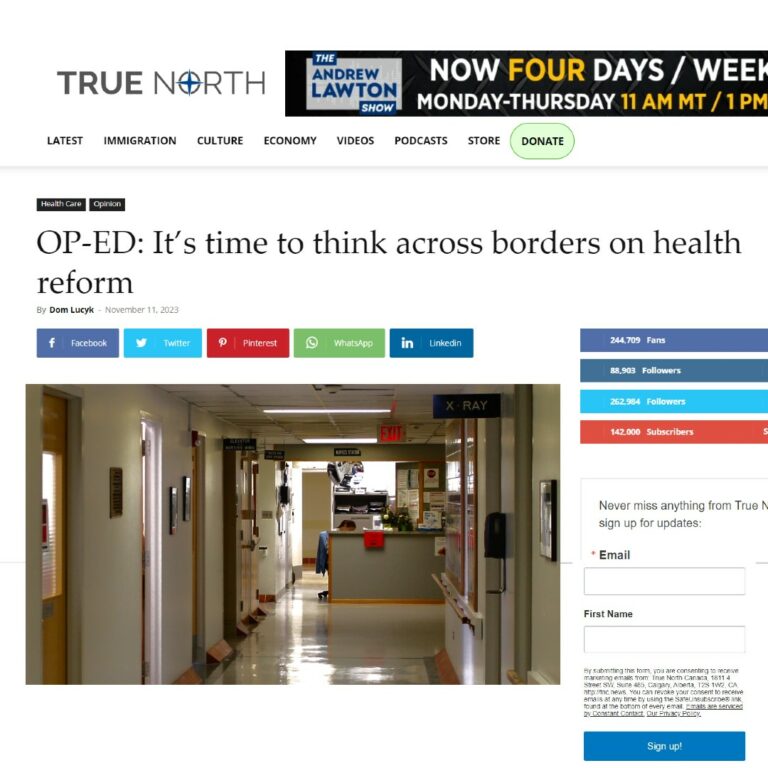TRUE NORTH COLUMN: It’s time to think across borders on health reform

Imagine if provincial governments could immediately reduce long health care wait times for thousands of patients from “years” to “weeks.” Canada could do just that if we copied a policy from the European Union called the Cross-Border Directive.
In the European Union, patients have the right to travel to another EU country for surgery, pay for it, and then be reimbursed by their government. Reimbursements cover up to the same amount it would have cost their government to provide the procedure locally.
It’s true that provincial governments sometimes reimburse patients for surgery in other jurisdictions – but that’s not the norm. Such cases tend to involve treating very rare diseases rather than common problems such as hip and knee replacements.
Take, for instance, Sharon Kilkenny. The Saskatchewan woman faced a 93-week wait for hip replacement surgery. She couldn’t put up with the pain and mobility loss for that long, so she traveled to Alberta and paid for private surgery.
After she had her surgery in April of 2022, she decided to see if she could receive reimbursement from the provincial government. She told SecondStreet.org that, after eight months, she was denied.
If provincial governments had the same policy as the E.U.’s Cross-Border Directive, it would have made Sharon’s life a lot easier – and the lives of thousands of other patients, who don’t have the means to scrape together enough money to travel for care.
Research shows Canadians love the idea of bringing this E.U. policy to Canada.
SecondStreet.org recently hired Leger to poll Canadians on what they think about the idea of copying the EU’s Cross-Border Directive. The results were conclusive. A staggering 74 per cent of respondents are in favour of implementing the policy in Canada. Support was high across all age groups, coast-to-coast, and among both men and women.
And why shouldn’t it be?
It’s easy to see why people waiting for surgery like the idea. It provides an option for them to get care more quickly. Simple. However, even if someone decides not to travel for surgery, the policy helps them, as well. Every time someone leaves the country to get care, everyone behind them on the waitlist moves up a spot. This could be a simple way to, for many patients, reduce wait times from years to weeks.
It’s also important to note that this policy could be cost-neutral in the medium term. Since we have a universal health care system, these are all surgeries the government would be paying for anyway. Allowing patients to travel merely shifts when the expense happens – now, instead of next year.
There may need to be some moving around of money in the government’s budget, but it’s really not a significant cost in the long term. Considering how governments at all levels in Canada are willing to throw away money on things like an $8 million barn, or spending $2 million to keep a failing coffee shop open, it shouldn’t be too much of an ask to pay for medically necessary surgeries earlier.
The Canadian health care system is not running as it should. Tens of thousands are dying while waiting for care, doctors and nurses are leaving to the U.S. and average wait times keep climbing.
The status quo in health care can not keep going as is. It’s time for governments to take bold, new directions on health care reform. While copying the Cross-Border Directive isn’t a silver bullet that will fix all of our problems, it’s a start. It would be relatively easy to implement, it could immediately lead to a drop in wait times, and Canadians clearly want to see it happen.
So what’s the hold-up?
Dom Lucyk is the Communications Director with SecondStreet.org, a Canadian think tank.
This column was originally published in True North on November 11, 2023.
You can help us continue to research and tell stories about this issue by making a donation or sharing this content with your friends. Be sure to sign up for our updates too!


